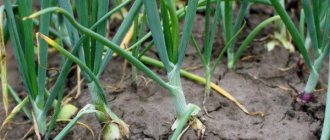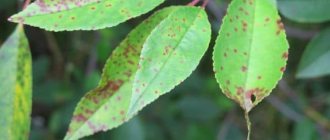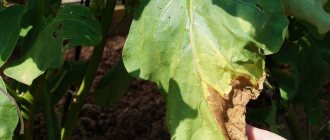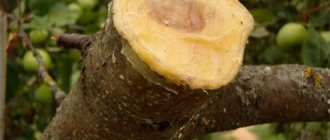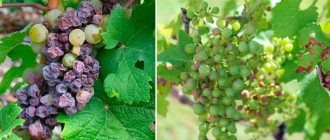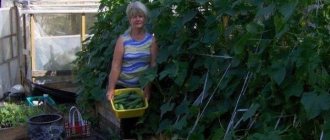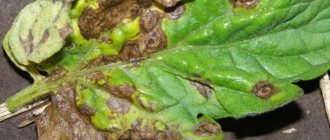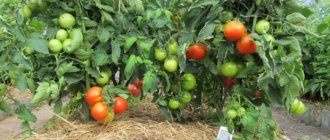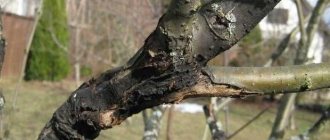Loading…
Loading…
The last quarter of the 19th century prepared serious trials for European winegrowers in the form of previously unknown crop diseases, among which was downy mildew. In the Old World, the study of mildew, a dangerous disease of grape leaves and the entire plant as a whole, began in 1878, and 18 years later the first case of damage to a vineyard was registered in Russia.
The microscopic fungus Plasmopara viticola, which settles on grapes, affects the entire above-ground part of the bush.
Uncontrolled development of the disease threatens the shoots and affected leaves withering, significantly fewer berries are produced, and the resulting ovary rots and falls off. You can cope with a serious enemy and not lose most of the harvest only by clearly understanding the picture of the disease, its development, and adhering to all measures to combat mildew on grapes.
What kind of disease is this?
Until the 19th century, mildew was known only in North America, where it was found on wild vines. This continued until phylloxera was discovered in France in 1868, at which time a group of scientists moved to America to search for disease-resistant varieties. The expedition was successful, but along with new varieties of crops, the fungus causing mildew was introduced into the country.
The French researcher Cornu was the first to sound the alarm - he pointed out the danger of downy mildew for varieties bred in Europe. But his remark was not taken seriously. After some time, the first outbreaks of the disease were discovered in the south of France, and then the epidemic spread throughout the country. A year later, mildew had already affected the vineyards of the Balkans and the Caucasus. Thus, massive infection of downy mildew caused the decline of viticulture in the late 19th - early 20th centuries.
Reference! Today, the disease is widespread in almost all crop-growing areas, with the exception of places like Central Asia, where there is no precipitation in the summer.
The causative agent of the disease is the fungus Plasmopara viticola, a relative of blue mold. This is an obligate biotrophic parasite - it develops exclusively on living plants. It damages all above-ground parts of the grapes. If the damage is severe, the bushes dry out, lose leaves, the vines on them do not ripen well and the harvest is lost.
The main differences between mildew and oidium on grapes
Powdery and downy mildew are the main severe fungal diseases that affect the vineyard and are often the main cause of its death.
. However, it is possible and necessary to combat them - to carry out preventive measures to prevent the fungus from entering the grapevines, and also to begin treatment of the affected parts of the grapes in a timely manner.
The main symptom of oidium is the appearance of a white coating with characteristic pubescence on the outer side of grape leaf blades, and in mildew, oily spots of brown or green color with a yellow tint appear on the reverse side of the leaves.
Both types of powdery mildew quickly spread throughout the grape bush and affect all parts of the plant.
A distinctive sign of powdery mildew is that the berries burst to the seeds, and the smell of such fruits is putrid.
With downy mildew, a thick compacted coating appears on the clusters and berries, the skin bursts, the pulp is watery, and the berries bleed juice. In case of both diseases, the affected berries cannot be eaten or used for processing.
How to determine if your grapes are sick with mildew (downy mildew) - video
Signs and photos of the lesion
The first stage of infection can be determined by the appearance of small (the size of a penny) oily yellow or reddish transparent spots. On young leaves they are rounded, on older leaves they are uneven, stretching along the veins. If the weather is humid and warm at the time of infection, then soon a silvery-white fluff - a mycelium - will form on the underside of the leaf blade.
Over time, infected leaves change color to brown, dry out and fall off. This weakens the vine and subsequently leads to a decrease in the amount of sugar in the berries. If mildew appears at the end of the growing season, then spots do not form - the leaves immediately become necrotic.
When infected, grape inflorescences turn yellow within 1-2 days, curl and become covered with a white coating. Then they turn brown and dry out.
Symptoms of berry damage depend on the stage of their development:
- Young ones (up to the size of a pea) become covered with a white coating, turn brown and die.
- Growing ones turn blue, wrinkle and mummify; plaque does not form on them.
- Mature - a light depressed spot appears on the side of the stalk, after which they turn brown, dry out and fall off.
There is practically no plaque on the shoots; instead, they become covered with grayish or brownish spots, and then dry out and die.
Spraying grapes against mildew as a measure to combat a dangerous disease
The timing of chemical treatment of a vineyard with mildew primarily depends on the appearance of oily spots on the green parts of the plant. The effect of protection will be greatest if, by the time the spore bearers appear, the surface of the leaves, inflorescences and shoots are completely covered with a layer of the drug. This means that the treatment should be carried out shortly before a whitish fluffy coating becomes noticeable on the back of the foliage.
The first spraying is done before flowering begins, and if last year the damage to the grape leaves was serious, it is especially important to treat the vineyard as soon as the temperature rises above +8 ° C and the first heavy rainfall falls.
When choosing the time for the first treatment of bushes, you can focus on the appearance of the first 3-4 leaves, and further spraying is planned based on the appearance of the fungus on the vine and the development of the fungus.
Treatment of bushes after flowering is aimed at protecting the ovary, which is most susceptible to disease after the flower calyx falls. If signs of the disease become visible when the grapes are actively blooming, treatment should not be delayed, but rather treated using products that do not contain copper. When the ovary appears on the hands, treatments are necessary depending on the weather and the manifestation of the disease.
How dangerous is infection?
Mildew spreads very quickly (up to 16 generations of the fungus are formed in 1 season), and it is quite difficult to fight it. However, the danger of rotting bushes is not all that the disease can cause for a vineyard.
- Affected plants attract pests and parasites.
- The harvest this year and next year is reduced by up to 50%.
- The quality of fresh berries and processed products is deteriorating.
- The bushes become unsuitable for taking cuttings.
- Plants weaken and do not tolerate winter well.
Reference! Even if the disease has not become widespread, the harvest will still suffer - the berries will lose their taste.
What harm does the disease cause to grapes?
Mildew causes enormous damage to the vineyard, so the gardener in this case suffers considerable material losses.
- There is a huge loss of berry harvest. It can reach up to 50-90%.
- The taste qualities of grapes and, in connection with this, processed products (juices, wine) are significantly reduced.
- It is inadmissible to prepare high-quality planting material.
- Grape bushes weaken, do not tolerate winter well and often die.
- Yields will decrease next year.
Reasons for appearance
It is impossible to isolate yourself from mildew; it can get into the vineyard:
- With materials for planting.
- With imported berries.
- On shoes.
- On the wheels of cars.
- Downwind, etc.
There is also a high probability of its formation under conditions of high humidity and temperatures ranging from 8 to 30°C. In addition, the pathogen tolerates winter well due to the formation of oospores - special spores with thick walls that are resistant to adverse environmental factors.
In the spring, the oospores germinate and form tubes, at the tips of which the sporangium is attached. It is transferred to the leaves and shoots of plants by rain and wind, and then releases zoospores. They penetrate tissues and cause infection.
We have determined what kind of disease it is, but the most important thing is to know how to deal with it.
Reference! At 26-27°C and 85% humidity, it will take no more than 5 hours for mildew to infect a grape bush.
Stages of development of Mildew disease.
First stage.
It all starts in late autumn. Before winter, this disease forms; as a rule, summer residents at this stage cannot see any hints of the disease.
Second phase.
Further winter and Mildew disease overwinters on plant debris. When spring comes and the temperature is above zero, the disease germinates and can continue to develop.
Third stage.
Pathogens penetrate the grape tissue and disperse throughout the plant. They feed on microelements in the grapes themselves.
Fourth stage.
In the hot season, namely in summer, they multiply and spread throughout the plant.
Fifth stage.
Also, under the most favorable conditions for this disease, namely a temperature of no lower than eight degrees and no more than thirty degrees and humid air, it can spread over a thousand kilometers in just one season before autumn.
Fighting methods
Crop varieties bred in Europe suffer more than others from mildew, so it is difficult to imagine the process of growing them without preventing and treating the disease.
Folk remedies
Folk remedies, although their effectiveness is significantly lower than various types of fungicides, are very useful during the period of formation and ripening of berries.
Wood ash
Wood ash
To prepare the mixture for spraying, you need to add 1 kg of ash to a bucket of water, mix thoroughly and leave for 72 hours. After which it should be diluted with water in a ratio of 1:10. Then you need to add liquid soap - 3 tablespoons for every 10 liters - and strain the mixture. It is recommended to use it immediately.
You can also sprinkle ash powder on the leaves of the grapes immediately after rain - an effective method, but the plants get very dirty. It is recommended to treat mildew with this solution once a week.
Soda, iodine and manganese
To make the solution you need:
- Dissolve 4 tablespoons of baking soda in warm water (40°C).
- Add 15-20 drops of iodine.
- Pour into a 10-liter container.
- Add a little manganese (until a light pink tint forms).
- Pour in 3 tablespoons of liquid soap.
It is recommended to treat the bushes with the solution for the first time before flowering begins, and then every 7 days. To carry out the procedure, you should choose a cloudy, but not rainy day.
Rotten hay
Pour water into a bucket of hay and leave it warm for 5 days. During this time, Bacillus subtilis forms in the solution, which is capable of destroying the fungus Plasmopara viticola. Before use, the infusion must be diluted with water (1:3). Bushes should be sprayed with it every 10 days throughout the growing season.
Reference! There is an opinion that planting dill around the perimeter of the vineyard can protect the bushes from downy mildew.
Fungicides
To prevent the occurrence of the disease, it is recommended to begin treating grape bushes in early spring against downy mildew. This can be done using systemic or contact chemicals.
- Systemic anti-mildew preparations not only protect plants, but also treat them. In addition, such products penetrate into tissues and therefore are not washed off by rain.
- Contact agents are only effective where they are applied, so it is important that they are distributed carefully. The main thing is not to overdo it so that the fungicide does not drain from the surface of the leaves.
| Drug name | Active ingredients |
| System | |
| "Acrobat MC" | Mancozeb, dimethomorph |
| "Convertible top" | Pyraclostrobin, methiram |
| "Acrobat Top" | Dimethomorph, dithianon |
| "Oxyhom" | Copper oxychloride, oxadixyl |
| "Ordan" | Copper oxychloride, cymoxanil |
| "Ridomil Gold MC" | Mancozeb, mefenoxam |
| "Quadris" | Azoxystrobin |
| "Revus top" | Difenoconazole, mandipropamide |
| "Poliram DF" | Metiram |
| "Thanos" | Famoxadone, cymoxanil |
| "Ordan MC" | Mancozeb, cymoxanil |
| "Tsihom" | Copper oxychloride, zineb |
| Contact | |
| "Abiga-pik" | Copper oxychloride |
| "Hom" | Copper oxychloride |
| Bordeaux mixture or mixture | Copper sulfate, calcium hydroxide |
| "Strobe" | Kresoxim-methyl |
| Copper sulfate | Copper sulfate |
Reference! Bordeaux mixture (mixture) is rarely used - it is believed that it slows down the development of shoots.
It is better to choose a drug based on the recommendations given:
- If the bushes look healthy, and the previous treatment was carried out recently, then it is better to use contact agents.
- In cases where symptoms of the disease are present, preference should be given to medicinal drugs.
- At the stages of bush formation, it is preferable to choose systemic chemicals.
- Treatment with contact agents should be repeated after each rain.
- The use of potent systemic drugs is allowed only until the berries are the size of a pea, then it is worth switching to contact ones.
There is another type of drugs - biological. They are usually used for prevention or after the stage of formation of large berries. Such means include:
- "Alirin-B".
- "Pentaphage".
- "Gapsin."
- "Trichovit."
- "Planriz."
- "Fitosporin" and others.
Reference! You should alternate medications with different active substances to avoid adaptation of the fungus.
Scheme for processing grapes from mildew:
| Time of processing | Recommendations | |
| After wintering and the garter procedure | treat both bushes and substrate with contact chemicals | |
| From the moment the 3rd leaf forms until flowering | use systemic medications | |
| During flowering | use systemic agents (without copper) | |
| After flowering to pea-sized berries | only if there are signs of disease, use contact or biological agents | |
| During the period of fruit formation | contact and biological preparations only if there are clear signs of infection | |
| After harvest | use systemic medications | |
You can read how to treat bushes against oidium, photos and descriptions of the disease in a separate article.
Agrotechnical techniques
Agrotechnical measures are designed to enhance the effectiveness of chemicals.
- Place plantings on well-ventilated slopes.
- Plant rows in accordance with the direction of constant winds.
- Tie up and trim bushes in a timely manner.
- Weed regularly.
- Use phosphorus and potassium fertilizers.
- Closer to autumn, add ash as top dressing (a bucket per bush).
- Carry out trimming and pinching.
- Promptly remove infected parts of the bush.
- Breed varieties that are highly resistant to the disease.
- Plant only healthy plants.
Prevention
In the fight against downy mildew, it is better not to rely only on fungicides and not to ignore preventive measures. To reduce the risk of infection you should:
- In autumn and spring, remove and burn plant debris.
- Water so that water does not get on the leaves and shoots.
- Systematically thin out the bushes.
- In preparation for wintering, spray the vineyard with iron sulfate.
- Do not skip processing.
- Follow agricultural practices.
Resistant varieties
There is a scale by which the resistance of a particular grape variety to the disease is determined.
| Point | Category Description | Variety |
| 0 | complete absence of disease | No |
| 1 | highly resistant varieties, do not need processing | "Vitis riparia" |
| 2 | resistant varieties, partially affected by the disease, no need to process | “Clairet Bulbasa”, “December”, “Arched” |
| 3 | moderately resistant varieties, require 2-3 preventive treatments | “Bianka”, “Moldova”, “Victoria”, “Augustine”, “Timur”, “Arcadia”, “Talisman”, “Laura”, “Danko”, “Rusmol”, “Viorica”, “Muromets”, “Riesling” Magaracha" |
| 4 | unstable varieties require regular spraying. | “Rkatsiteli”, “Aligote”, “Cabernet” |
| 5 | “Kishmish Khishrau”, “Cardinal”, “Rizamat” |
Reference! Susceptibility to the disease also depends on the age of the bush - old ones are more resistant than young and fast-growing ones.
More details about the resistance of grape varieties to mildew, oidium and other diseases and pests are described in our separate article.
It is possible to cure grapes from mildew - you just need to show a little patience and follow the recommendations. You can determine that the disease has been defeated by looking at the leaves - the fluff on their back side will take on a grayish or brownish tint. Such changes indicate the death of the fungus.
Ways to suppress this disease.
A few facts.
- Summer residents and gardeners are trying to cure their grapes with various chemicals.
- They pour into the ground or spray all the grapes from the top leaf to the roots.
- However, the use of chemicals does not guarantee that the disease will be eradicated by any percentage.
- If the weather gives a green color to the disease, then there is no point in spraying.
The only way to combat mildew is to create new varieties that will be immune to this disease. Scientists have already begun to develop new varieties and this is clearly going towards success.
